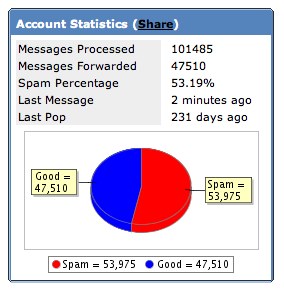Blog Spam and/or comment spam is becoming a big problem on the internet. Any website that displays any type of link page, or uses hyperlinked text in its content can easily be targeted by blog spammers.
Blog spam and comment spam happens when a bot or actual human visits a forum, a blog, or a chat room and automatically posts self-promotional links to the spammers websites. There is generally no content value in the comment itself, just a simple link.
Spammers engage in this activity in the hopes that they can improve their search engine rankings. If their ranking is boosted, then the spammer’s website wil be indexed above all of their competition. Thankfully, many search engines have algorithms that ban any site from their index if they detect spamming. Spammers will use popular blogs, news sites, forums and chat rooms to boost their promotional links. This serves two purposes: 1) Many people will click the link, generating traffic to their site; and, 2) Spammers sometimes make sales this way unashamedly.
Blog spamming is simply a revision or extension of guestbook spamming. Spammers used to visit sites that had a guestbook on them and literally jam them up with links to their websites. The whole purpose of a guestbook was to log real, human visitors on the website, and share with others who visits the website hosting the guestbook. Spammers generally would not type anything other than, “Hey, love the site,” then just fill their post up with spam links.
 Around 2004, forums and blogs became very popular, and spammers applied the guestbook philosophy to these sites. Although attempts have been made at making software to fight of the spammers, technology works both ways – they always seem to find a way around it.
Around 2004, forums and blogs became very popular, and spammers applied the guestbook philosophy to these sites. Although attempts have been made at making software to fight of the spammers, technology works both ways – they always seem to find a way around it.
Website owners and webmasters can incorporate several methods to stop spammers in their tracks. Email verification or ID verification is a common security measure many websites use to insure their users are truly human and not spam bots. Generally, a code is sent to your email with an activation code. Once you enter your code, you can access the site. A spam bot does not go through any of those steps but simply moves on to the next potential victim.
Captcha codes are perhaps the most popular security measure being used today. A captcha code is simply an image of randomly generated letters and numbers that must be entered in to complete the registration process or to post a comment. You may have noticed that many captcha codes are hard to read. This is because newer bots can now translate the image into text with relative ease. If the numbers and letters are slightly deformed or slanted, the spam bot will not be able to decipher it. Captchas can also be case sensitive for added security – if the letters shown are capitalized or are in lowercase, they must be entered exactly as they appear to proceed further.
While we could all do without spam, unfortunately it seems that it will be very difficult to stop completely. This is why it is pertinent that you protect your email addresses and websites from spammers to the highest security level possible.
Leave a Reply
You must be logged in to post a comment.